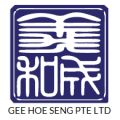Plastic Recycling in Singapore
What is Plastic Recycling?
In 2023, Singapore generated 957 thousand tonnes of plastic waste, but only 5% (48 thousand tonnes) were recycled.
The global production and consumption of plastics have been rising due to the increase in single-use plastics, such as disposable cups, utensils, straws, bags, and most food packaging, which are discarded immediately after use.
Plastics reaching the bin are often contaminated by food and drink residues or consist of a mixture of different types of plastics. This contamination complicates and hinders the recycling and segregation process.
For example, a plastic drink bottle typically contains three types of plastics:
- The bottle (PET)
- The heat shrink label (PVC)
- The bottle cap (HDPE)
Clean PET bottles are easily recyclable. However, separating the labels (PVC) and bottle caps (HDPE) is often difficult, costly, labor-intensive, and time-consuming. Consequently, many of these plastics end up in landfills instead of being recycled. Plastic identification codes not mean that the plastic is recyclable, rather, it is developed to help categorize plastic products according to their material type.
Types of Industrial Plastics We Recycle
We currently only accept the following industrial plastics:-
• Clean, Clear Stretch Film with no labels, tapes, and stickers (LPDE)
• Clean IC Tubes with no labels and stickers
• Clean IC Reels with no labels and stickers (PS – Colour & PS – White)
• Acrylic (PMMA)
• Clean Liquid Container with no labels and stickers (HDPE – White)
• FOSB
• FOUP
• IC Trays
• Plastic Resins
Our Plastic Recycling Process
The process of plastic recycling often involves:-
- Collection of plastics.
- Sorting the plastics into different categories based on their respective identificiation codes. The different plastic products must be further sorted into coloured and non-coloured (clear/white). Clear plastics fetches the highest value, as it can be easily dyed into any other colour.
- Plastics are washed and cleaned, so as to ensure that debris and contaminants are removed. It is then shredded, crushed into flakes, or melted and pelletized into granulates, which are used to manufacture new products.





